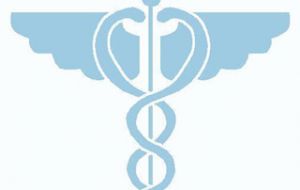MercoPress. South Atlantic News Agency
First proven case of “mad cow disease” in haemophilic patient

The United Kingdom Health Protection Agency has confirmed the first case of the human form of “mad cow disease” in a patient with haemophilia. A post-mortem showed the man, who was “over 70” and had received plasma products before rules were introduced to limit contagion, died infected. However he died of other causes and had not shown any symptoms, the HPA said.
Up to 4,000 haemophilia sufferers have been warned they could be at risk of variant Creutzfeldt-Jakob disease. The HPA says it is still unclear how the man became infected with the prion protein that causes vCJD, but it is known that he was treated with several batches of UK blood plasma products before 1999, when the risk of transmission was not known. Specifically, he was treated with a batch that was manufactured from the plasma of a donor who went on to develop symptoms of vCJD. It is the first time that vCJD has been found in one of the thousands of haemophiliac patients who received blood plasma transfusions between 1980 and 2001. They have been told they all run a low risk of developing the disease. While this is the first case involving plasma products, three people have died after being infected with vCJD linked to blood transfusions. "This new finding may indicate that what was until now a theoretical risk may be an actual risk to certain individuals who have received blood plasma products, although the risk could still be quite low," said Professor Mike Catchpole of the agency's Centre for Infections. "We recognise that this finding will be of concern for persons with haemophilia who will be awaiting the completion of the ongoing investigations and their interpretation." There is no test that can screen for vCJD, although development work is underway. However, even if an effective test were available, there is no means of treating the brain-wasting disease. Professor Catchpole added: "This finding does not change our understanding of the risk from vCJD for other people in any specific way. But it does reinforce the importance of the precautionary measures that have been taken over the years." UK plasma is no longer used for the production of the clotting treatment haemophiliacs require, and when suitable, synthetic products are used. Chris James, the chief executive of the Haemophilia Society, said the Department of Health needed to now act "swiftly to give people the full details and offer them the appropriate support. "Detailed information about recent developments must be made available immediately to all those who have been treated with potentially-infected plasma products." David Allsop, professor of neuroscience at Lancaster University, said there was no need for widespread concern among haemophilia sufferers. "The only real cause for concern is for other haemophilia patients who received clotting factors from the same infected human donor, at around the same period of time; and they can presumably be traced and given specialist advice." VCJD was first detected in the mid-1990s but remains rare. The vast majority of the 164 deaths in the UK are believed to be linked to eating meat infected with bovine spongiform encephalopathy (BSE). From Dublin the Irish Hemophilia Society said it is concerned following confirmation that a person in the UK has been infected with vCJD via contaminated blood plasma. Around 50 people with hemophilia in Ireland have used plasma from the UK. The Irish Hemophilia Society says letters have been issued to all people with hemophilia in Ireland informing them of the development.




Top Comments
Disclaimer & comment rulesCommenting for this story is now closed.
If you have a Facebook account, become a fan and comment on our Facebook Page!